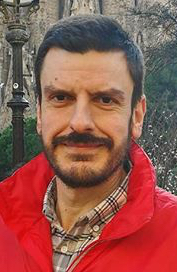Last month I went to the House of Lords for a meeting of the All party group for international development and the environment. The morning’s question was: Where next for sustainable development after Rio+20? I’ll give a brief resume of who said what, with some of my thoughts following over the next weeks….
Joan Walley, MP for Stoke-on-Trent North opened the morning’s reflections on Rio. She chairs the Environmental Audit Committee which monitors action across different government departments. At the top level, Rio lacked vision and clear objectives. Her select committee really tried to engage with government, but there was no commitment from the PM that he was going, and no clear vision from them. She felt the process needs to be reinvigorated – connecting, collaborating, and understanding the details – e.g. how the proposed Sustainable Development Goals will link with the Millennium Development Goals.
Stephen Hale from Oxfam asked how do we accelerate the pace of global change on sustainable development and increase the scale of national change? This is beyond Rio, of which he had very low expectations (and was still disappointed). Why were the outcomes so poor? His thesis was we are living in a period where multilateralism is weak – the G20 also had very poor outcomes. The breadth of issues – the triple line of economy, ecology and equity – is understood by the Rio community but the multilateral process is too weak to deliver change. He put forward:
- Understanding the concept of sustainable development does not itself deliver change
- Change comes by confronting vested interests and shifting power. Need to build coalitions. Don’t need unifying concept
- Multilateralism matters hugely but we need to pick our battles. Be selective
- Business conversation was in a parallel universe. NGOs highlighting how terrible Rio was while business was much more bullish
- We need a new set of clear and ambitious global goals to follow the MDGs.
Steve Waygood is the Head of Sustainability Research and Engagement, Aviva Investors. Companies like Aviva know that the economy is on an unsustainable footing. Aviva worked with Forum for the Future to outline a vision for a sustainable economy by 2040 – http://www.forumforthefuture.org/project/framework-sustainable-economy/overview. Aviva’s goal is that every company over £2 Bn should be thinking about sustainability and report their achievements in their annual reports. At Rio, Aviva proposed a Convention on Corporate Sustainability Accounting, which wasn’t accepted overall but elements were included in the final agreement. Steve highlighted the massive need for good data in the area of sustainability – 90% of what Bloomberg needs to report in this area is missing.
Lord Julian Hunt was part of the GLOBE world summit of legislators at Rio, which had representatives from 180 countries. One of the major questions was how parliaments should participate in international work and legislation – they are complementary to each other and we need progress on both. Lord Hunt highlighted how rarely the work of UN Agencies such as the WHO is debated in parliament – only once in the House of Lords. Population was an issue that barely featured at Rio in 1992, but was discussed much more this year, especially by the developing nations. He mentioned that South India now has a static population, and highlighted the importance of understanding local context and perspective (rather than a ‘western NGO’ view). Sustainability, for example, means very different things in different parts of the world.
Andrew Scott is a research fellow at the Overseas Development Institute, and was happy to see an agreement in principle to idea of sustainable development goals and initiation of a process to develop these. He queried how energy would feature in these goals, and questioned the level of agreements that can be realistically reached at international level when national governments ultimately make the decisions. He highlighted case studies from the ODI development progress programme that show how much progress is being made at the national level – for example in Costa Rica where payments for ecosystem services have been used to tackle deforestation.
Miguel Pestana is the Vice President for Global External Affairs at Unilever. He reflected that from a business perspective there was a lack of specificity and ambition, although Unilever are committed to integrating sustainability with their business and there were 1000+ CEOs at Rio. But with 60% of the world’s governments in election cycles in this year, he was not surprised at level of political commitment and ambition. Nonetheless, there were some significant commitments – e.g. on deforestation involving Walmart, Telco and Unilever. He highlighted the critical role of the UK government in shaping the process and engaging business – the UK is hosting the G8 and G20 meetings, and David Cameron is co-chairing the review of the MDGs. He called for specificity – the SDGs need to include nutrition, sanitation and hygiene – as Jeffrey Sachs eloquently outlines in his recent Lancet article.
David Nussbaum, Director of WWF, compared what was politically possible at Rio (given that Brazil removed anything controversial from the text) with what is scientifically necessary. The stifled official process meant that more interesting things happened in the fringe – UK watercourses convention, disclosure by quoted companies of their emissions.
He saw much positive action from the private sector and questioned how to encourage more and to help, strengthening links between the economy and the environment. He cited work on natural capital, of which UK Govt Chief Scientist Sir John Beddington has been a good supporter, and the ways that fossil fuel subsidies, and agriculture and fisheries practices damage this.
Questions from the floor included how the MDG and SDG processes will relate to each other, and highlighted a need for a framework to clarify how this will happen. The role of pressure from the bottom up, and an engaged and informed citizenry were seen as central to aligning political will and scientific imperative. Miguel Pestana hoped to see a co-creation approach for the SDGs, with less emphasis on the word ‘goal’ in a highly volatile and changeable situation.
















